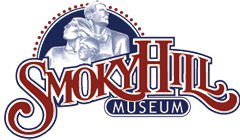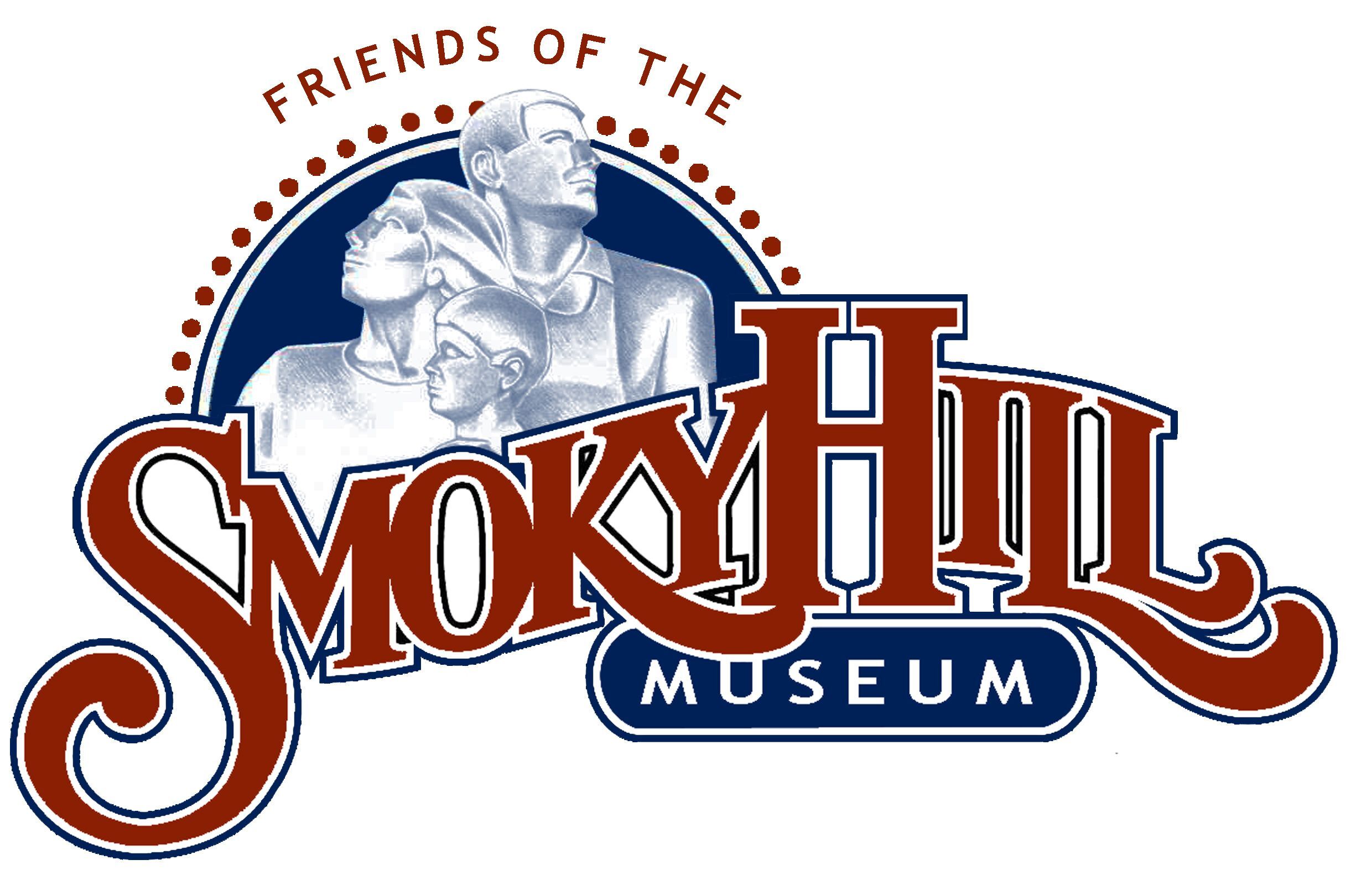Let's Play
Drawings by John Keeling
-
Play is powerful!
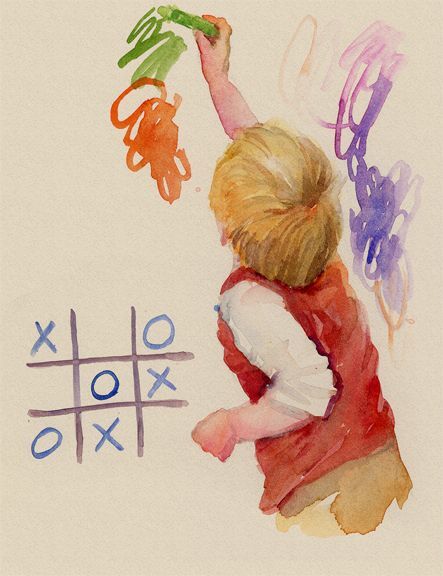
Play is not meaningless. Play is an outlet for imagination and wonderment. Play is not a luxury. It stimulates new ideas, enriches important skills and sparks joy through understanding. Play utilizes the senses as a pathway to see and connect to the world. It is a bridge from “what is” to “what if.” Play helps us adapt to the ever-changing world around us.
Explore the power of play through the lives of local children from the late 1890s to 1950. From making up games to toys to using everyday objects, children play. They explore their worlds through various types of play – creative, physical, competitive, etc. This look at play shows that imagination does not need computer-based technology to have fun. Toys may change, but people will always play.
-
In the 19th century, America took up the concept of “playgrounds” from Germany...
Playgrounds Abound
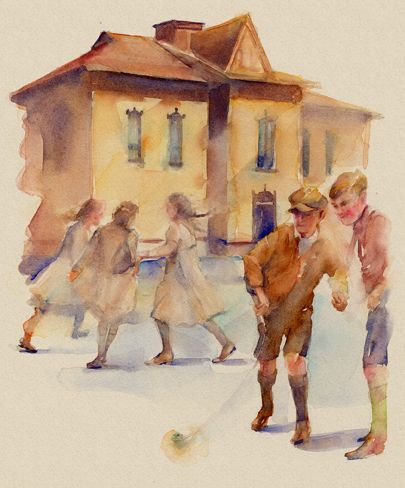
In the 19th century, America took up the concept of “playgrounds” from Germany. By the 1880s, play centers and sand gardens dotted urban areas. In these playgrounds, children amused themselves with little intrusion from adults. Even in England, Queen Victoria urged every village to have a park or garden for kids to play and explore. Playgrounds quickly spread across the United States.
Second Ward’s Playground
In the 1890s, the Second Ward school playground bustled with energetic students at 7th & Elm. Passersby saw children engaged in an array of activities from rhyming games to spinning whip tops. Sounds filled the air. The crack of the bat as boys played a lively game of baseball. Girls hummed and sang, “Here comes a blue-bird through the window – High diddle dum day!” as they played the rhyming game, Blue-birds and Yellow-birds. And the click-clack of children gathered around – mastering a game of marbles. -
The Party
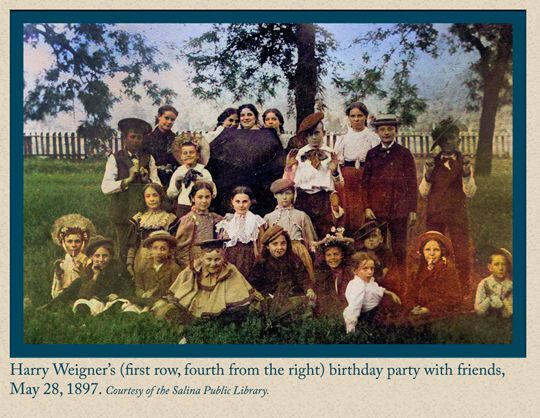
Meet Harry. He celebrated his birthday with friends at Oakdale Park in 1897. All afternoon they played fun outdoor games. The highlight of the party was a jolly game of King Arthur was King William’s Son – a kind of growing parade. Children used creativity to include everyday hats, clothing and umbrellas. They jumped, climbed and ran to landmarks such as trees, benches and Oakdale Park’s fountain. Still dressed, with their props and kazoos in hand, they stopped for a picture. They ended the party with a hearty supper fit for a king.
-
Other Places to Play
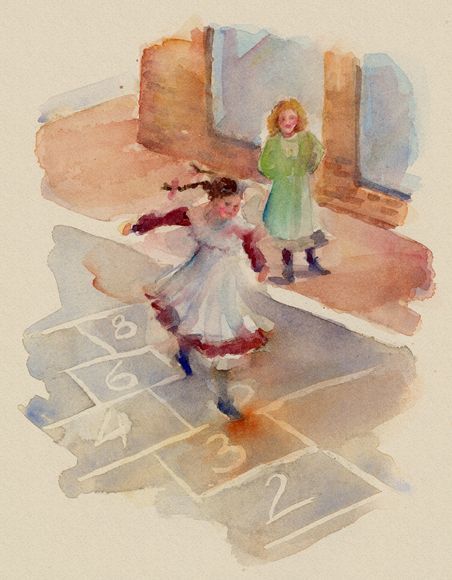
Playgrounds were not the only places full of active children. It was commonplace to find children playing in the streets and on sidewalks. As cities grew, their streets provided new avenues of play as children dodged horse-drawn wagons. Paved roads let balls bounce higher. Streetlights extended play into the evening. Telephone poles and planters became important parts of outdoor games. Children roamed freely.
-
In the 19th century, play was thought to be frivolous. As the turn of the 20th century loomed, viewpoints started to change...
About Play

In the 19th century, play was thought to be frivolous. Therefore play was mostly structured, goal-oriented and directed by parents. Play was meant to be purposeful, to learn life skills. Toys were a rehearsal for adulthood.
As the turn of the 20th century loomed, viewpoints started to change. The use of unstructured, free play grew. Children could create and improvise without a goal in mind, giving them unlimited possibilities. In addition, the number of toy factories grew by almost 270% from the 1850s to the 1880s. Toy production surged. The increase in toy production provided additional outlets for unstructured play and encouraged children’s ideas for play. Children had more and more toys. Toy chests and toy boxes became not only popular but were necessary for storage.
Toys for Fun
More toys meant more kinds of toys especially toys just for fun. Of course, kids had to get those toys from somewhere. Dime stores, also called five-and-dimes and five-and-ten-cent stores, popped up across the nation starting in the 1880s. Locally, Salina’s 99 Cent Store opened at 122 North Santa Fe Avenue. These stores were full of low-cost goods, including toys. Shopping habits changed and buying toys became routine. By 1900, attitudes about play began to shift to allow more free play. Rather than being a rehearsal for adulthood, childhood became a time of freedom, joy and exploration. -
Play to Create
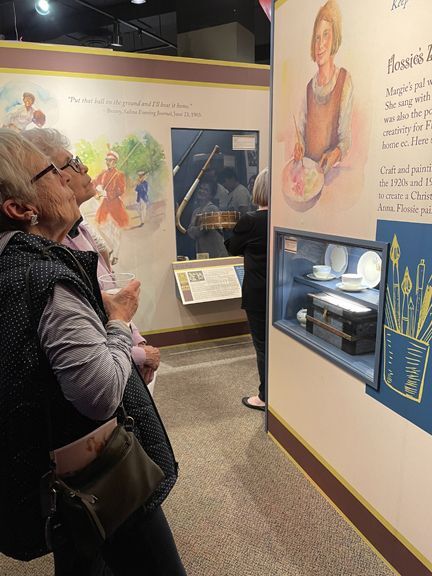
Not all play involves toys. Sometimes a child just wants to create. They use whatever tools and materials are available from drawing in the dirt with a stick to using an artist craft kit. Children open their minds up to what is possible with creative play. They take chances, solve problems, collaborate and become better creative thinkers and doers. There are five components of creative play: inspire, imagine, build, play and share.
-
Flossie’s Zeal for Art
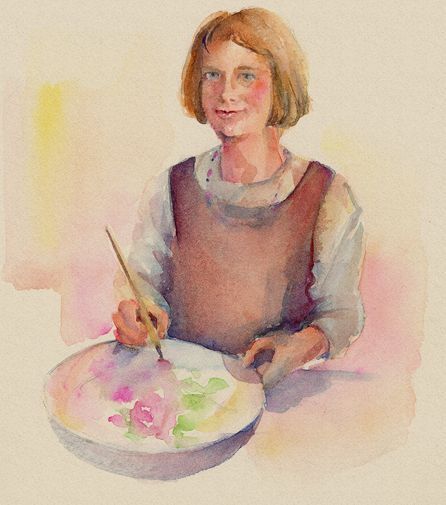
"Dearest Pal O’ Mine:
I feel that you will have much success in this life…
Remember the day in the Domestic Art room when we nearly died laughing…
Keep the cheerful smile on your face that you always have…
Your True Friend, Margie"Margie’s pal was Flossie, who lived in Assaria, just south of Salina. Flossie sang with the glee club and participated in arts and sports. She was also the point guard on the basketball team. A place for fun and creativity for Flossie was the school’s domestic art room, also called home ec. Here she could express her love of painting.
Craft and painting kits became more readily available for children in the 1920s and 1930s. In the winter, Flossie used her passion for art to create a Christmas gift of china dishes for her foster mother, Anna. Flossie painted every detail of these dishes.
-
Play that Moves
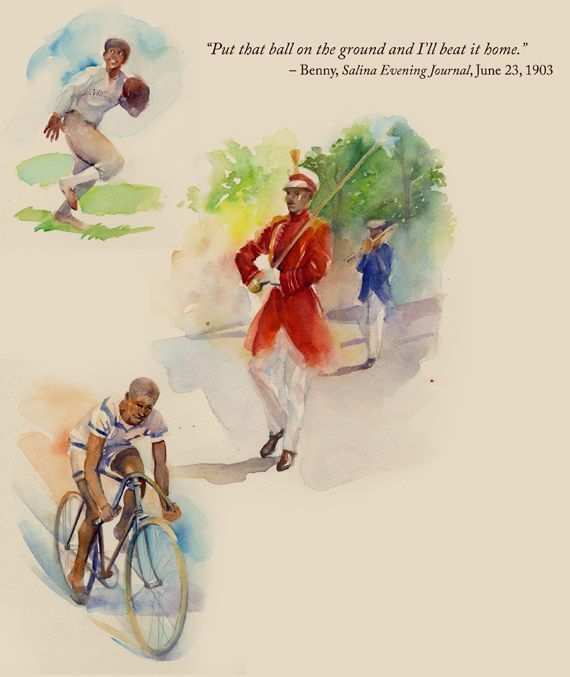
Children naturally wiggle, fidget and squirm. Physical play just comes naturally and can take many forms from running around to organized sports. Powerful for both the mind and body, physical play encourages both fine and gross motor skills. The benefits don’t stop there either. There is improved fitness, muscle growth, strength, coordination, increased bone density and endurance. Healthy bodies also mean healthy minds. Organized activities require attention, discipline and social interaction.
-
Benny’s Adventures
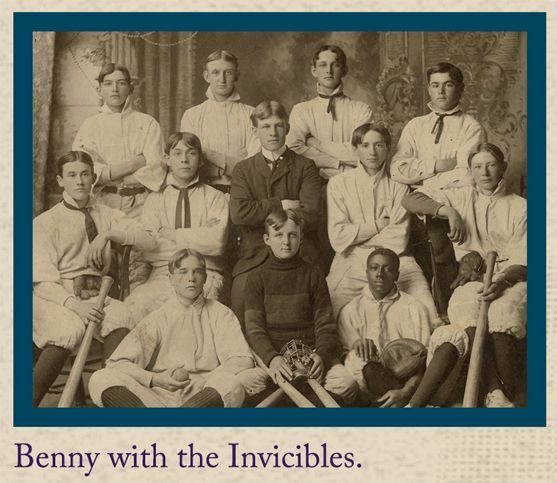
Benny balanced participation in many activities in Salina including baseball, bicycles and band. Sports taught him skill and determination. Music bestowed composure, poise and precision.
From doing bicycle tricks to racing, Benny liked to ride his bicycle. He won three of five races held in Oakdale Park. His prize was a pair of bicycle racing pants from Ober’s Store. These came in handy when he rode his bicycle to Abilene with friends.
Benny also played catcher for Salina’s The Invincibles. In a game against Gypsum, Benny tagged out a runner at home plate to keep the shutout going. The Invincibles won 7 to 0.
As drum major, Benny led the Salina Military Band. He traveled out of town with the band to perform at festivals in neighboring towns. He was in the band with many talented musicians including Senor Pedro Romero, who composed the “Salina Union March” and taught Spanish lessons.
-
Competition is often a part of play. It is through fair, competitive play that life-long lessons are learned...
Fair Play
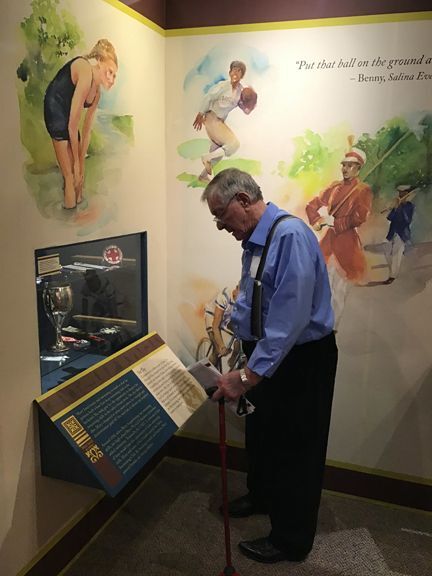
Competition is often a part of play. It is through fair, competitive play that life-long lessons are learned. Rules, turn-taking, respect, friendship, team spirit, equality and the realities of winning and losing are the big life lessons taken from this type of play. Emotional lessons, such as being a good sport and coping with defeat, are learned as well. Competition can be intense. It is important to remember that it is not by winning, but by playing admirably that makes a champion.
Special Thank You to Our Sponsors
Earl Bane Foundation
Wimer Family Charitable Foundation
Salina Regional Health Foundation
